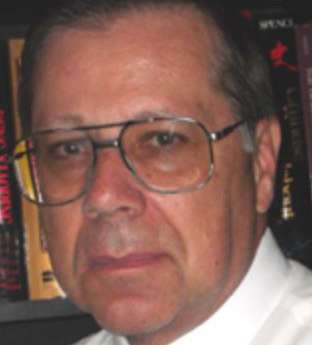
By JOHN RICHARD SCHROCK
Nationwide, state education departments face a drastic shortage of K–12 teachers. Although the focus is on these last several years of stressful teaching during the pandemic, this decline in teachers and students desiring to enter teaching began several decades ago. Even without the upheaval caused by necessary and required social distancing, hybrid and fully online course delivery and thousands of missing students, the numbers of new teachers has been declining due to a wider range of measures that have taken away the professional authority of teachers. This decline in teachers varies by grade levels and by subject.
The teacher shortage in special education started when the mandate for wider special education began and teacher training never caught up. Shortages in other fields became severe with the implementation of the disastrous No Child Left Behind legislation supported by both political parties, imposing proficiency levels and mandating 100 percent success by 2014. This was as insane as mandating in medicine that everyone would survive hospitalization. But political action threatened schools with penalties that in turn resulted in teachers losing much of their professional responsibility.
Math and English Language Arts were the critical assessments. Hundreds of classes in art, music and other fields that were not assessed were scrapped. Those teachers lost their jobs while many schools double-scheduled students to raise scores on assessed subjects.
Science teachers were among the first to bail out. Many were skilled at leading students in lab and fieldwork, and knew how to get students to ask questions, set up experiments, and interpret results. Instead, many were ordered to teach-to-the-test. –Use rote memorization. High school students saw the change in their classes and the pressure on teachers, and decided not to pursue a teaching field in college.
The critical metric is the number of new teacher licenses or certificates awarded by the state departments of education each year, and the numbers plummeted. In Kansas, smaller schools were never able to all provide licensed physics and chemistry teachers, but this downturn in new teacher graduates resulted in shortages in nearly all subject areas over time, and well before the pandemic.
The standardization and assessment movement has likewise taken away other professional decision-making from teachers. To meet pressure for higher graduation rates, many school districts have ordered teachers to inflate grades. The public has likewise changed. Before, if a student got in trouble at school, they got in trouble at home. Now, the parents often come in to complain the next day, and administrators often provide no teacher defense. Again, students see this. Fewer enter teaching.
The Kansas State Legislature ended K-12 teacher tenure a decade ago. Previously, a teacher had three years on probation to show their professional skill and could be dismissed without being given a reason. Now Kansas teachers can be non-renewed anytime without “due process.” This resulted in a further decline in teacher production: half of my future biology student teachers came in and changed to non-teaching fields. Some Kansas districts write due process into teacher’s contracts. But the college student who looks at potentially becoming a teacher realizes the risks of taking on house payments if they can lose their job for no stated reason.
Our failure to address the science teacher shortage has led to a decades-long decline in U.S. science literacy across all STEM fields. As a result, the U.S. lost its lead in producing STEM graduates in 2007. American scientists no longer published the most science research after 2017. We are no longer the country with the most new patents after 2019. And nearly half of our current university majors in STEM fields are foreign students, coming over from stronger K–12 science education overseas.
It is the decisions now being made in state boards of education across this country that will determine if we will turn around this decline by increasing K-12 science requirements and recruiting more science teachers with higher qualifications, or if we will drop to the ignorance level of the undeveloped world.
. . .
Below graph shows annual numbers of new Kansas biology teacher licenses from 1999-2016.

. . .
John Richard Schrock has trained biology teachers for more than 30 years in Kansas. He also has lectured at 27 universities during 20 trips to China. He holds the distinction of “Faculty Emeritus” at Emporia State University.





